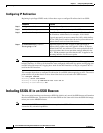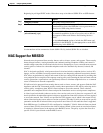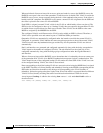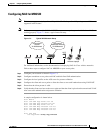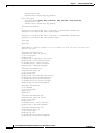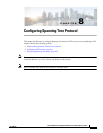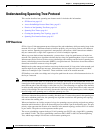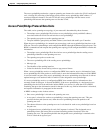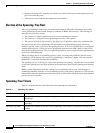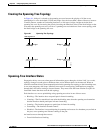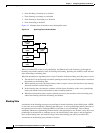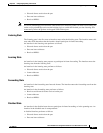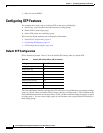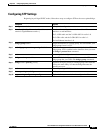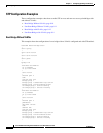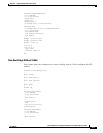
8-4
Cisco IOS Software Configuration Guide for Cisco Aironet Access Points
OL-30644-01
Chapter 8 Configuring Spanning Tree Protocol
Understanding Spanning Tree Protocol
• Interfaces included in the spanning-tree instance are selected. Root ports and designated ports are
put in the forwarding state.
• All interfaces not included in the spanning tree are blocked.
Election of the Spanning-Tree Root
All access point/bridges in the Layer 2 network participating in STP gather information about other
access point/bridges in the network through an exchange of BPDU data messages. This exchange of
messages results in these actions:
• The election of a unique spanning-tree root for each spanning-tree instance
• The election of a designated access point/bridge for every LAN segment
• The removal of loops in the network by blocking Layer 2 interfaces connected to redundant links
For each VLAN, the access point/bridge with the highest access point/bridge priority (the lowest
numerical priority value) is elected as the spanning-tree root. If all access point/bridges are configured
with the default priority (32768), the access point/bridge with the lowest MAC address in the VLAN
becomes the spanning-tree root. The access point/bridge priority value occupies the most significant bits
of the access point/bridge ID.
When you change the access point/bridge priority value, you change the probability that the access
point/bridge will be elected as the root access point/bridge. Configuring a higher value decreases the
probability; a lower value increases the probability.
The spanning-tree root is the logical center of the spanning-tree topology. All paths that are not needed
to reach the spanning-tree root from anywhere in the network are placed in the spanning-tree blocking
mode.
BPDUs contain information about the sending access point/bridge and its ports, including access
point/bridge and MAC addresses, access point/bridge priority, port priority, and path cost. STP uses this
information to elect the spanning-tree root and root port for the network and the root port and designated
port for each LAN segment.
Spanning-Tree Timers
Table 8-1 describes the timers that affect the entire spanning-tree performance.
Table 8-1 Spanning-Tree Timers
Variable Description
Hello timer Determines how often the access point/bridge broadcasts hello messages to other access
point/bridges.
Forward-delay timer Determines how long each of the listening and learning states last before the interface begins
forwarding.
Maximum-age timer Determines the amount of time the access point/bridge stores protocol information received on an
interface.



